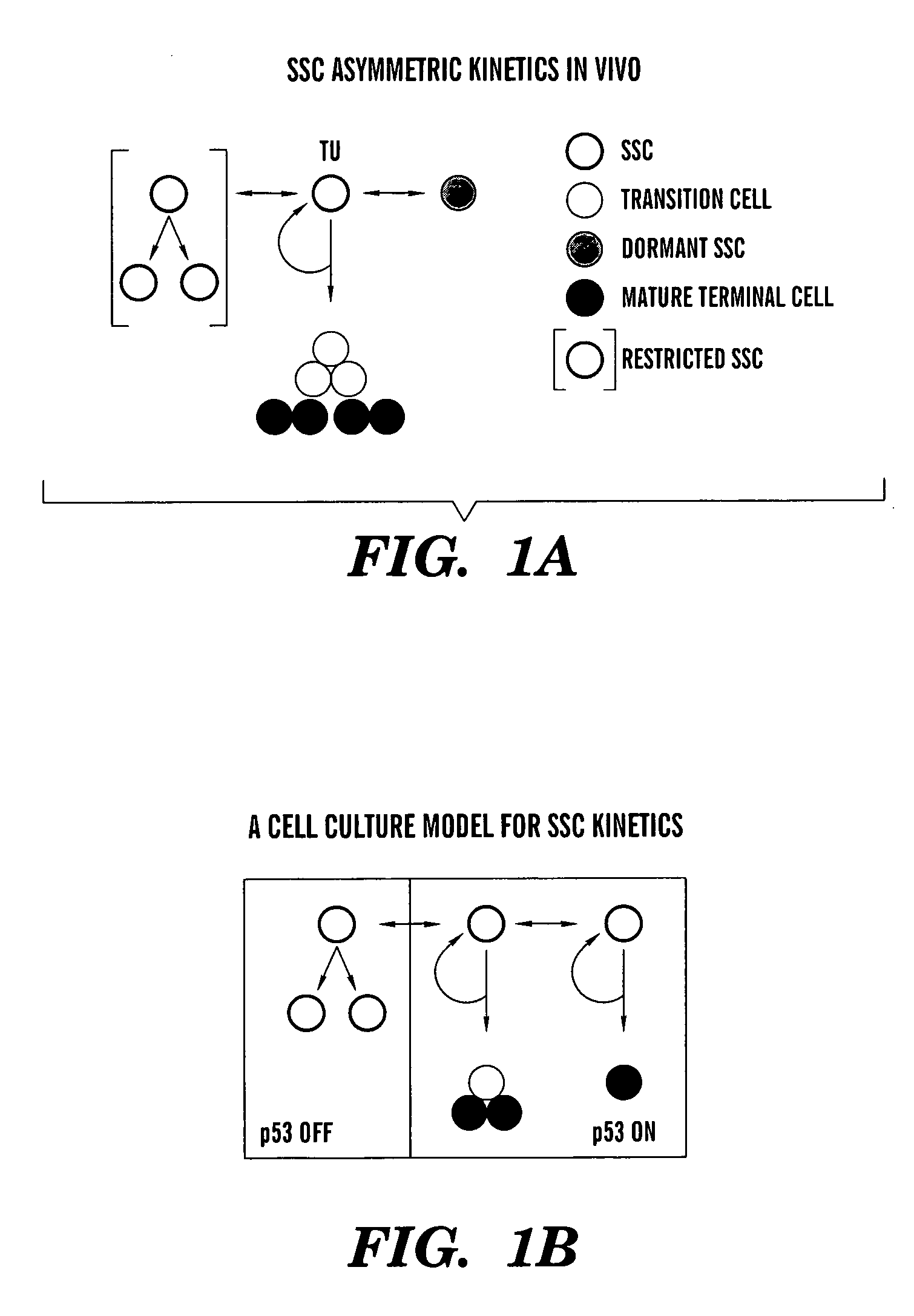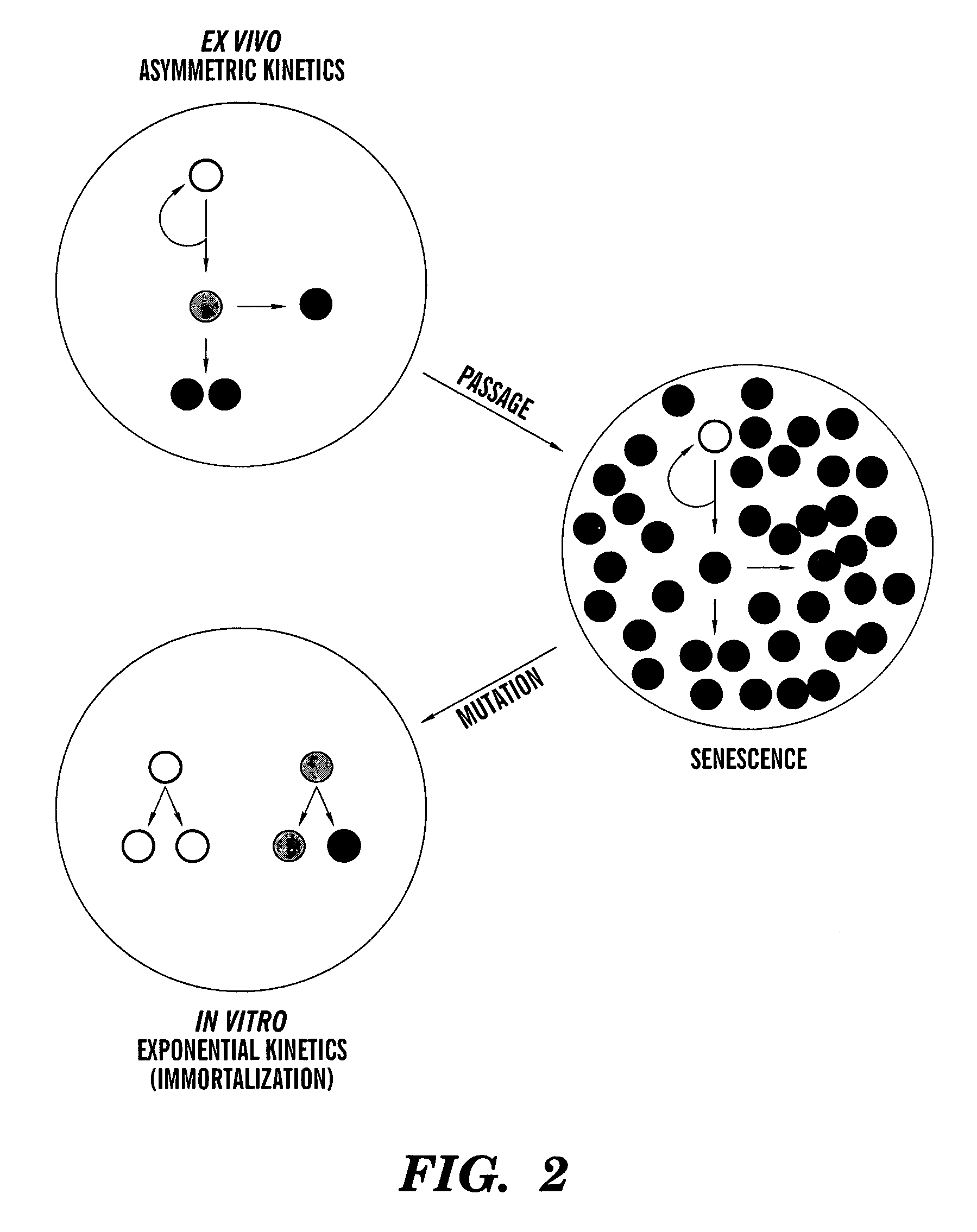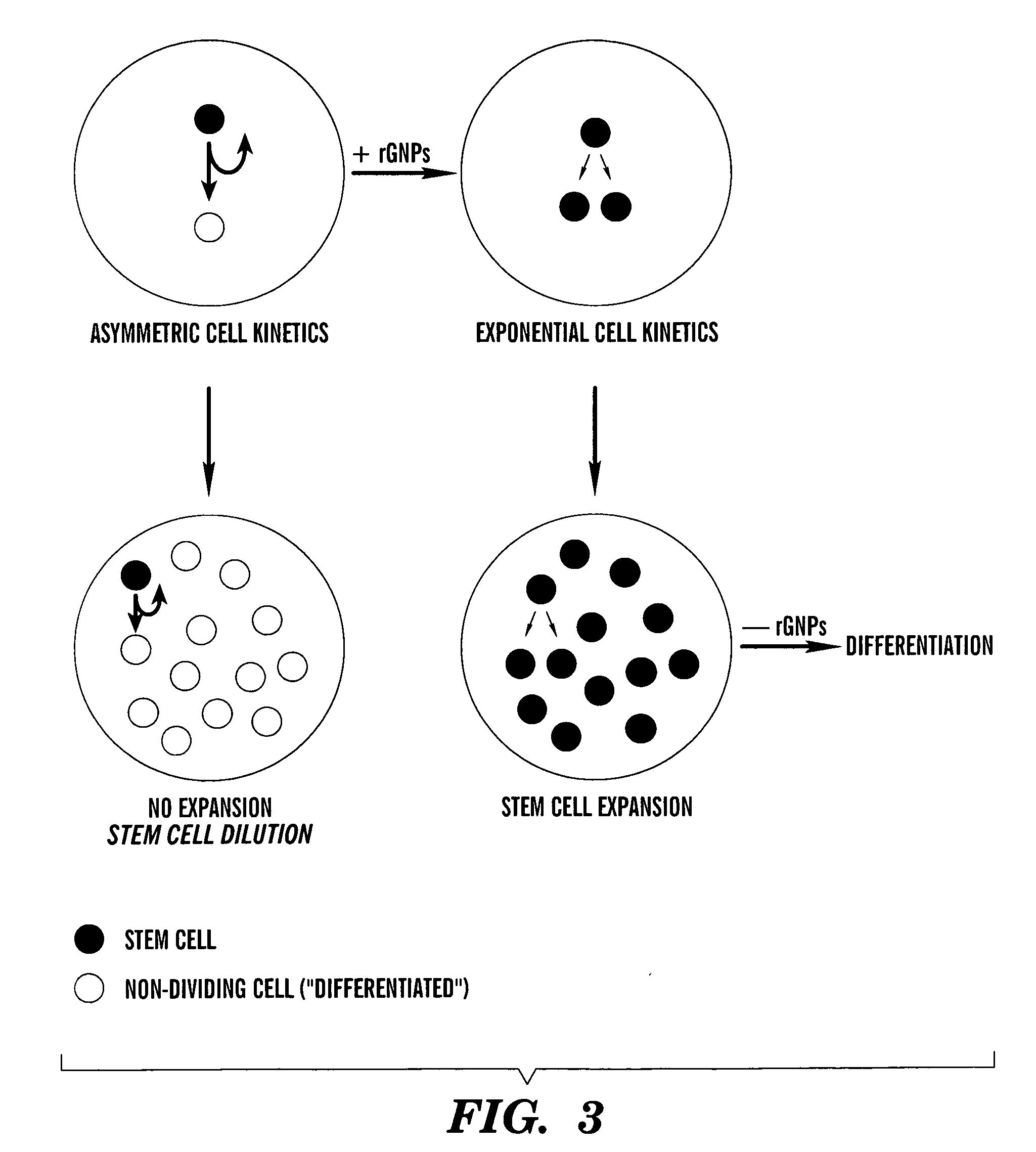Methods for ex vivo propagation of adult hepatic stem cells
- Summary
- Abstract
- Description
- Claims
- Application Information
AI Technical Summary
Benefits of technology
Problems solved by technology
Method used
Image
Examples
example 1
Propagation of Human Somatic Liver Stem Cells
[0149] Materials and Methods
[0150] Cells: Human liver cells are tested for blood borne agents, the non-parenchymal (NPC) fraction is place on ice for up to 24 hours and then centrifuged at 800×g for 5 minutes at 4° C. The resulting cell pellet is re-suspended in 50 ml-100 ml cold Dulbecco's Modified Eagle medium (DMEM-high glucose) supplemented with 1% dialyzed fetal bovine serum (DFBS). Based on the count of trypan blue-excluding viable cells, 5×106 viable cells are plated in 10-cm diameter cell culture dishes.
[0151] Initiation Culture Medium: DMEM-high glucose supplemented with 1% DFBS, 20 ng / ml recombinant human epidermal growth factor (EGF), 0.5 ng / ml transforming growth factor-β1 (TGF-β1), and one of the following purine compounds at 1 mM concentration (0.4 mM to 1.5 mM can also be used): Hypoxanthine, Xanthine, Xanthosine. Control cultures are without added purines and do not support establishment of cell strains.
[0152] Once a w...
example ii
Derivation of Human Adult Stem Cell Strainsby SACK, Sub-Clones
[0183] Although initial efforts to derive cell strains by limiting dilution cloning were unsuccessful, we modified the approach by initially culturing primary liver cell preparations at confluent cell densities under conditions of reduced serum and supplementation with SACK agents, TGF-β and EGF (See Table 1). SACK-derived rat adult stem cell strains resist hepatocytic differentiation by TGF-β and EGF. Whereas their non-stem cell progeny undergo cell cycle withdrawal and hepatic differentiation in response to serum reduction and exposure to TGF-β and EGF, in the presence of Xs, the stem cells continue to cycle actively.
[0184] Using the modified SACK method, we derived 12 independent cell lines from 2 normal livers from male donors of ages 1 and 24 years old. Although it was possible to develop strains using Hx, Xn, or Xs, so far, Xs has proven the most reliable and effective. Xs-derived cultures have been passaged as ma...
example iii
Expression of Inducible Cytochrome P450 Activity
[0203] We have demonstrated two important properties of adult stem cells 1) expression of the PXR nuclear receptor that mediates the induction response of cytochrome P450 CYP3A4 to drugs and xenobiotics; and 2) expression of inducible CYP3A4 activity. The demonstration of these properties validates our SACK approach for developing stable cell strains with these highly desired properties for drug discovery research and pre-clinical evaluations of drug toxicology and drug interactions. Derivatives of SACK derived cell strains that express inducible CYP3A4 can be made that stably express CYP3A4 promoter-GFP, -CFP, YFP fluorescent protein gene constructs, for use in high throughput assays.
[0204] The expression of the 44 kDa molecular weight PXR nuclear receptor by a phHASC parent strain and two expanded subclones was evaluated in immunoblot analyses with anti-PXR antibodies. Two different sources of antibodies were used with similar resu...
PUM
| Property | Measurement | Unit |
|---|---|---|
| Fraction | aaaaa | aaaaa |
| Fraction | aaaaa | aaaaa |
| Molar density | aaaaa | aaaaa |
Abstract
Description
Claims
Application Information
 Login to View More
Login to View More - R&D
- Intellectual Property
- Life Sciences
- Materials
- Tech Scout
- Unparalleled Data Quality
- Higher Quality Content
- 60% Fewer Hallucinations
Browse by: Latest US Patents, China's latest patents, Technical Efficacy Thesaurus, Application Domain, Technology Topic, Popular Technical Reports.
© 2025 PatSnap. All rights reserved.Legal|Privacy policy|Modern Slavery Act Transparency Statement|Sitemap|About US| Contact US: help@patsnap.com



